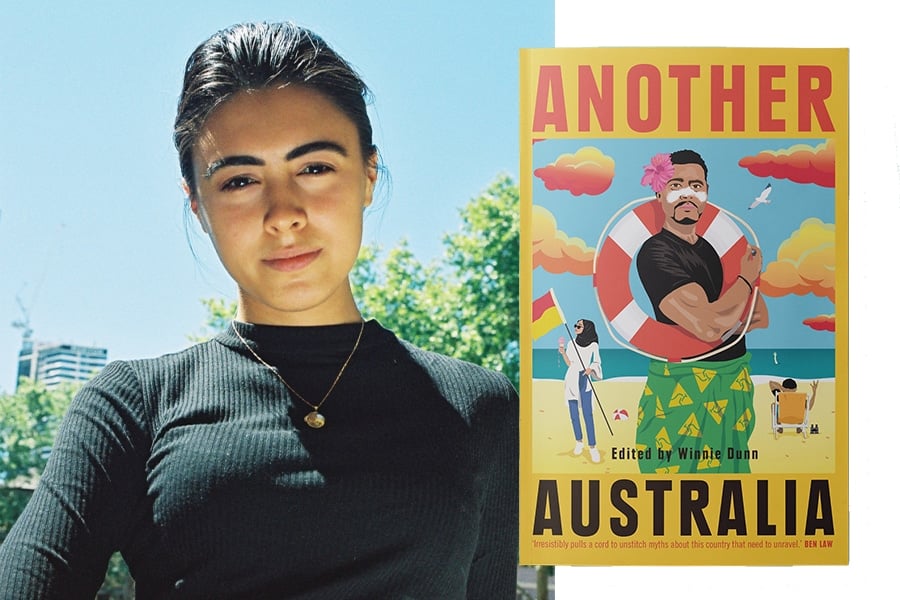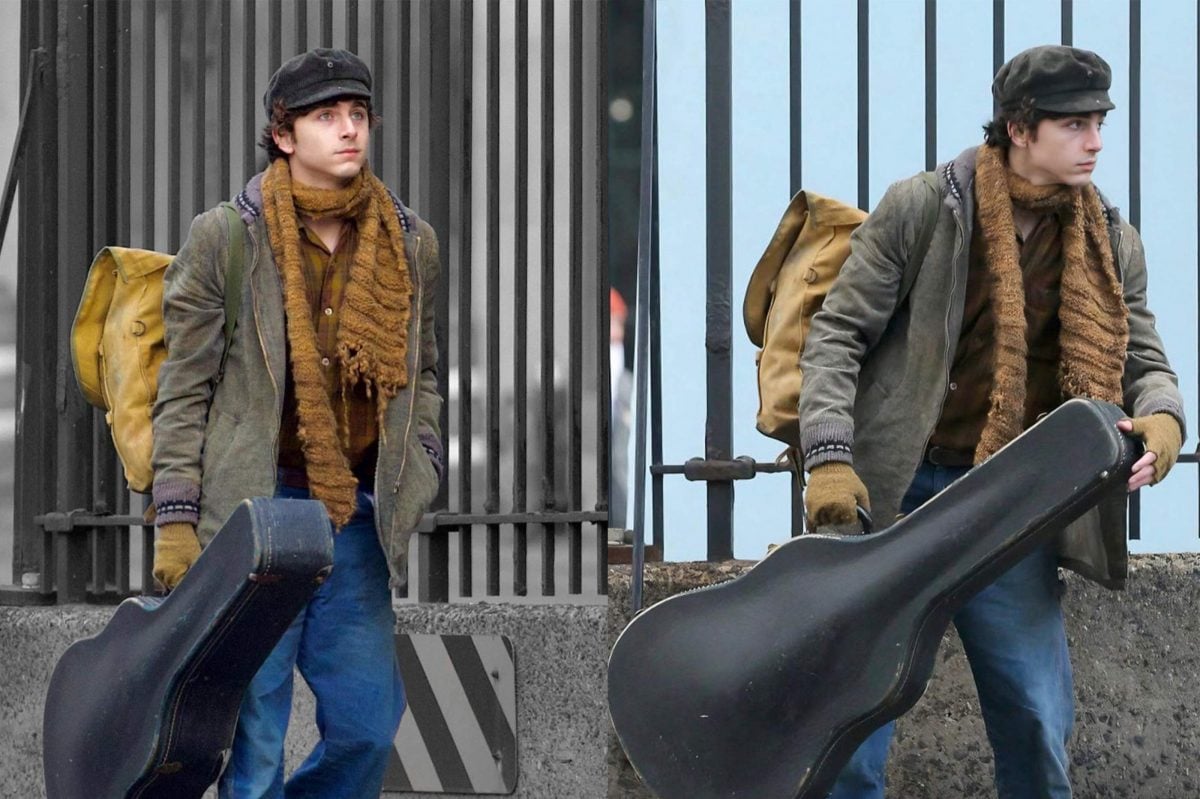
"This current reality we're living in right now, it's volatile, to say the least", Winnie Dunn tells me. The General Manager of Sweatshop Literacy Movement, editor and soon-to-be published author has just released Another Australia, an anthology she likens to a "mind map" or "blueprint" to the current issues we're facing in Australia.
If it sounds familiar, it's because the collection of essays serves as a second instalment to the critically-acclaimed book After Australia, where twelve daring Indigenous writers and writers of colour were tasked with imagining Australia 25 years from now. This time, Another Australia grounds us in the present, inviting twelve more First Nations and writers of colour to create a pathway out of this mess we're in, one outside the dominant White gaze. To set the tone, Dunn prompted the contributors with the following question: "What lies beneath, behind and beside the country we think we know?"
Opening the anthology is a prologue from Nardi Simpson, author of the Stella Prize-longlisted novel Song of the Crocodile. Written entirely in Yuwaalaraay, as Dunn reminds me, "when we say always was, always will be this is what that sounds like". What comes next is experimental writing from visual artist and author of The Mother Wound, Amani Haydar, as well Shirley Le, Sara Saleh, Omar Musa, Osman Faruqi, Shankari Chandran, Declan Fry, L-FRESH the LION, Mohammed Massoud Morsi, Sisonke Msimang and Anne Marie Te Whiu.
Below, RUSSH caught up with Winnie Dunn to discuss the new anthology and why the philosophy of bell hooks still resonates today.
What is your approach to editing, specifically with Another Australia?
Editing is the ability to pull words apart and dig deeper. It's finding the deeper meaning that's presented in the words that you're given by a writer because their writing is not just surface level. So the way that I approached Another Australia in particular, with all the 12 writers, was that a lot of my notes to them was just "dig deeper" or "what does this mean?" I think about that quote from bell hooks where she says "degrees of literacy determine how we see what we see" and so for me, I just wanted to see what the writers were saying from their own perspective as much as I could.
The 12 people I invited are my, I want to say mentors in a way. They're the people of colour that were leading the way in Australian literature before I came in. So I already knew that they were expert writers, it was more just me trying to ensure that they were writing each sentence to create an original contribution to knowledge. So that was my input as an editor.
What was the idea behind Another Australia? How is this anthology different to After Australia?
It's very rare that we are able to live in our present as people of colour and First Nations people. We're always either traumatised by the past or worrying about the future. But with Another Australia in particular, it's like, "no, I just want to focus on right now" – the present myths and barriers in Australia right now.
As professor Ghassan Hage says, there's a fantasy of white supremacy in Australia that centres whiteness and white people in conversations about race and identity. But that's just not the reality of the situation at all, like as a Tongan, I honestly believe that those kinds of conversations about race and racism and identity should happen in a circle, or what Tongan's call Talanoa. Where we're all made equal in that circle and we are all giving our perspectives to solve a very big issue, because that issue is just not going to get solved by one central voice or one central perspective. Another Australia was about growing the circle that was set up in After Australia.
What's been the best thing about editing Another Australia?
Just creating deeper connections with writers in Australia that I deeply look up to.
What did you learn from working with these writers on Another Australia?
I learned that craft, being an expert in your craft, is individual to every writer. Each writer has their own style and flair and it was just so humbling for me as an editor to learn the kind of little nuances between each writer's style and craft and what it is. For example, Declan Fry, who's a First Nations writer and cultural critic, was really interested in punctuation and grammar and how he could transform punctuation and grammar to be as integral to the story as written letters and words. He doesn't even use a speech marks.
In the case of Omar Musa, in his poetry everything's lowercase. Things are exaggerated and accentuated in a strange way, and he complemented his poetry with visual art. He did a whole cut print to go along with his poem, blending the written art form and the visual art form together. Just stuff like that.
How does Another Australia compare to other anthologies you've edited?
With sweatshop and its anthologies, they're really a collection of emerging writers that we work with, and I know not everybody likes that phrase, but I just can't think of any terminology to explain somebody who is forcibly marginalised who has just come into the practice of literature and learning that craft. I find that phrase quite hopeful in itself, like I see it as flowers blooming.
The Big Black Thing: Chapter One was the first anthology I co-edited with Mohammed [Ahmad] in 2017. It was Sweatshop's first real showcase of writers that I had been working with years before I had joined, but also the next generation of writers that were school-age students. Being able to go to those schools and teach kids like me the importance of representing themselves in Australian literature, where they've either been underrepresented or misrepresented, like, in my case, Chris Lilley and Jonah from Tonga was my big form of misrepresentation in Australia about the Tongan Australian identity.
And so, that's why African American feminist and scholar, bell hooks talks about the power of mirroring: seeing yourself mirrored in a figure who has a position of authority and a space that you want to go into. She uses the example of Barack Obama bending down to this young African American kid to let him touch his hair, because the kid had asked "is your hair like mine?" And so I really take that responsibility of being able to be a mirror to the next generation of young writers of colour and young Pacific Islander writers that we work with in schools, to be able to reclaim their own stories and be able to enjoy the hard work of being a writer, loving the craft, and wanting to learn as much as we can about the craft to be the best storyteller that you can be.
That's how the anthologies differ from Another Australia. Whereas in Another Australia it's about the people who paved pathways for me. The ones who mirrored me.
Another Australia is the second installation in what will hopefully be a three-part series from Sweatshop in partnership with Affirm Press. You can order the anthology at Affirm Press, Sweatshop or most book stores.
Image: Poetry and Poetics



